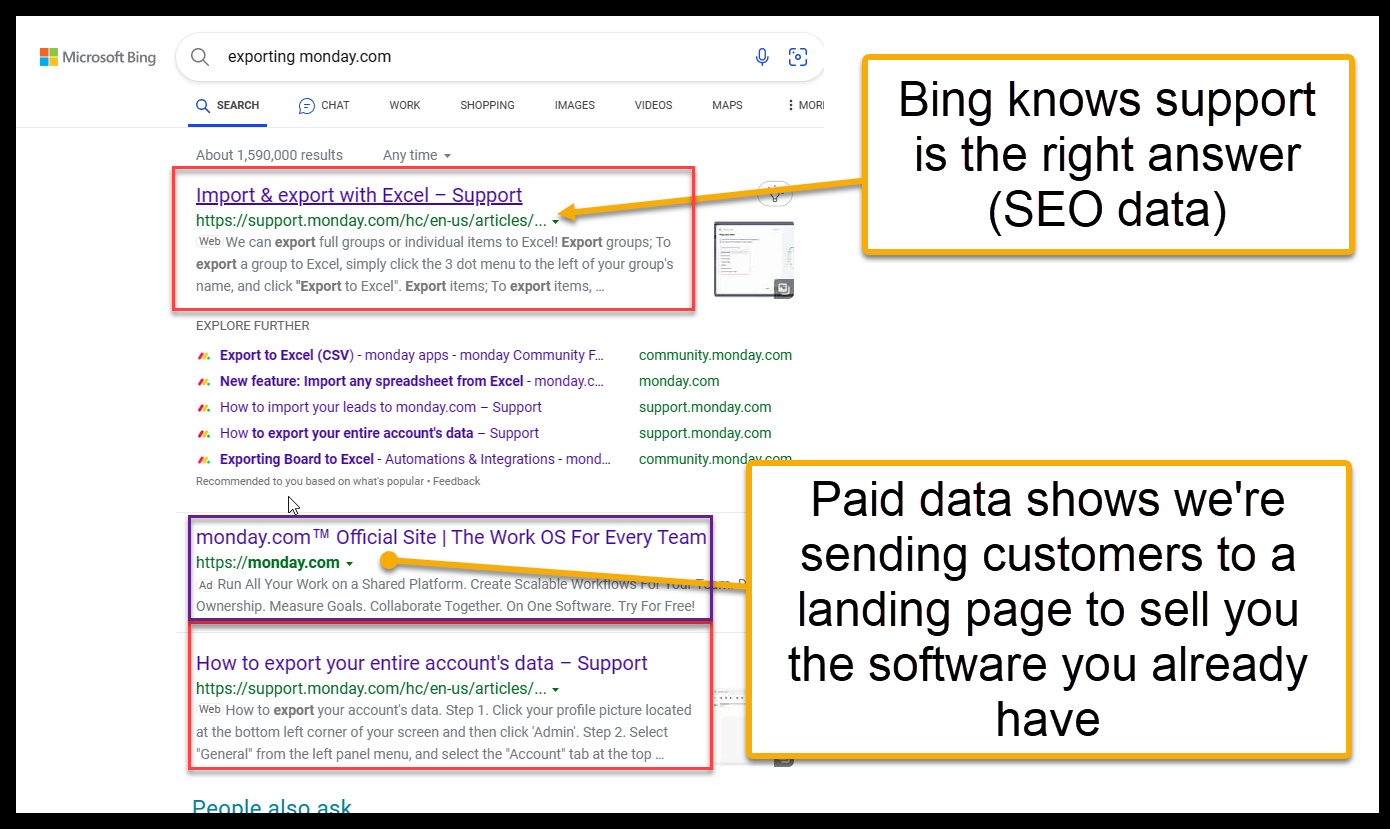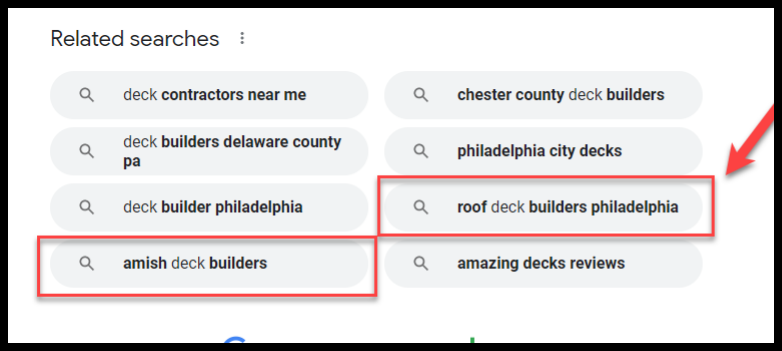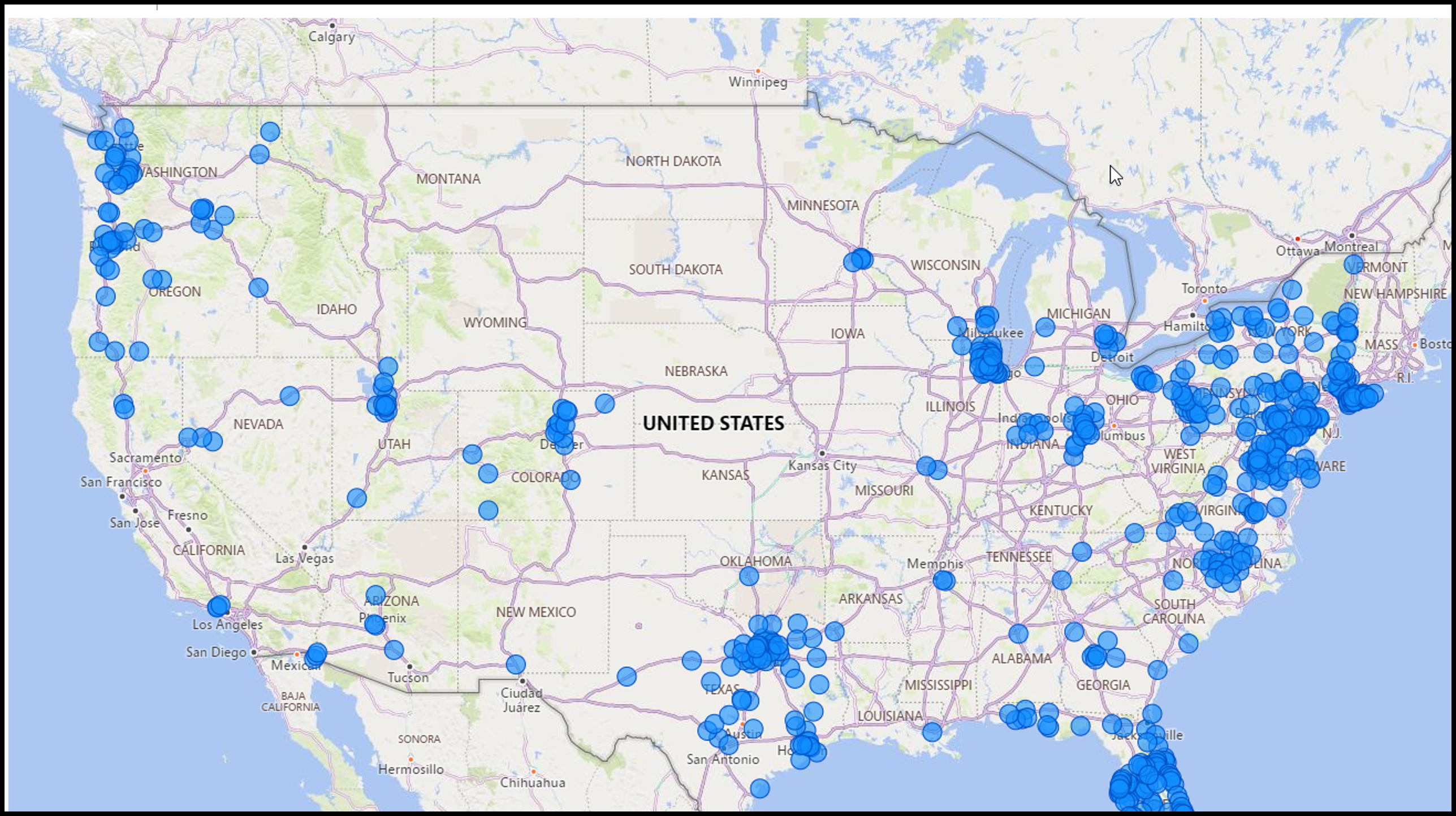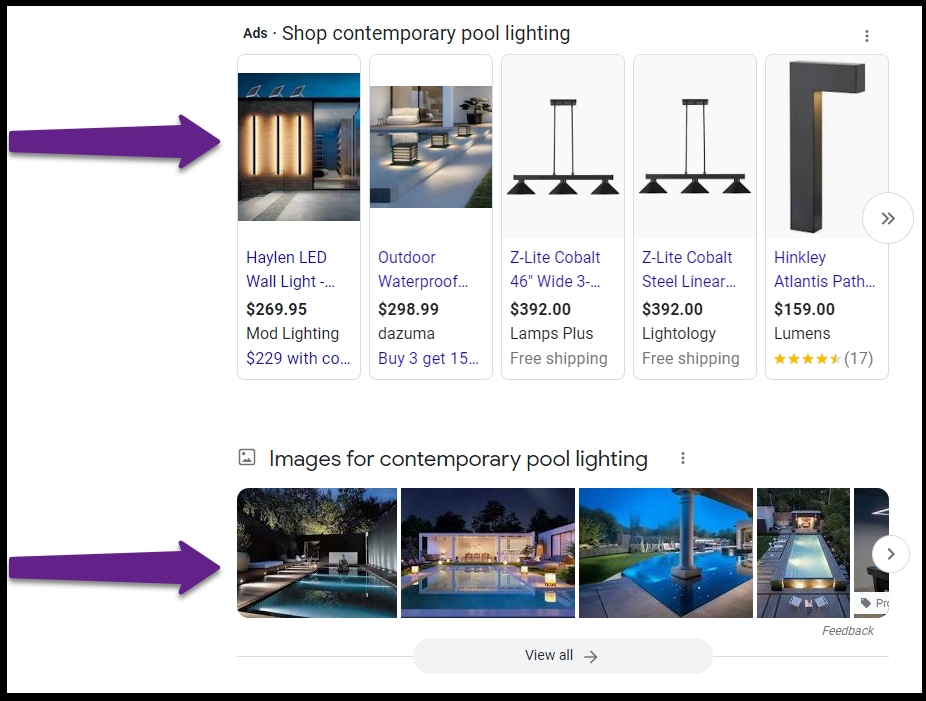Your customers see PPC & SEO results - why is your strategy still so siloed?
Searchers see PPC and SEO results in the same experience.
So why do most of the toolsets focus on one or the other, giving you, the marketer just another fractured view of what the customer experiences.
There are 2 major parts of this post, the top are 10 ideas and the bottom are videos showing you how to start doing this.
Basics: What are PPC & SEO?
Let's ground ourselves in what these channels are / how they work.
PPC (Pay-Per-Click): Often times at the top and bottom of the search engine results page (SERP), where advertisers can bid on keywords to get visibility. One great feature is matching, you can bid for the word "Red sneakers" and show up for all kinds of other matches that are similar. Giving you insights into your customer, how they search etc.
SEO (Search Engine Optimization): The process of getting pages up on a website & tweaking them over time to rank higher in organic SERPs for specific keywords or phrases. Page content needs to be tweaked, competitors must be monitored, and you must make sure your site is indexable and that the content is linkable to achieve the best rankings you can get.
11 advanced examples of integrated SEO & PPC strategies you can test:
Make better PPC landing pages w/ People Also Ask
Use SEO rank data for your brand to find customer service opportunities
Find PPC landing pages answering too many queries
Make localized paid ad copy based on related searches by zip
Better shopping feed images / landing page images
Include conversion propensity & ROI in your SEO recommendations
Bidding on your brand - follow best practices or your own data?
Use SEO data to help you trim wasted spend in your PPC budget
Pitch content refreshes with PPC and SEO data together based on ROI
YouTube / TikTok strategy using the SEO results
Spot Opportunities When Competitors Pull Back
#1 Make better PPC landing pages w/ People Also Ask
Where do people also ask results come from? Well, Google looks at what people searched for before and after a search, they then try to determine how well the pages that answer those do at helping the user. Joining this typical "SEO" data point to your PPC data you can see what questions are on the minds most for this cohort of keywords. Doing this could also help you with quality scores and thus costs in PPC - on top of helping improve conversions.
#2 Use SEO rank data for your brand to find customer service opportunities
Are you in SaaS? This one is especially helpful - if you take all of your paid search "search terms" and run them through an SEO tool, you can see at scale, where am I paying to drive people to a sales driven landing page, when the search engine has already learned that the support section, login page, etc is the likely the right answer?
Someday I want to join my analytics data in here and see if I can use these visitors to capture an audience of high value existing customers who keep hitting our clients support sections and maybe give them a "VIP" quick on ramp to support. If you are going to pay for the clicks, why not drive someone to actual support frustrating them.

#3 Find PPC landing pages answering too many queries
Take your ad final URLs and all the search terms driving to those pages, then run them through an SEO tool to get all the #1 ranking URLs. Now you end up being able to show how your 1 page is answering 50,000 queries but Google believes that it takes 600 pages to properly answer the exact same set of keywords.
#4 Make localized paid ad copy based on related searches by zip
Did you know that you can run keyword scrapes in multiple cities and zip codes? If you are trying to speak the language of your customer on a local level, it might be helpful to look at the related searches from Google - for instance I found that when looking for someone to build a deck in Philadelphia I was getting related searches like Amish and Roof.

My preferred tool is Power Bi, which lets me create maps of where I'm seeing regional language changes by zip code for related searches. This can help me adjust PPC ad copy to test using bugs that are regional one area vs others in another for an exterminator client. It can help me know what cities do people care more about the race of their therapist for an online therapy client.

#5 Better shopping feed images / landing page images
When your customer is searching and an image pack shows up in organic search, guess what? Google or Bing has learned that an image is likely the right answer. So that trigger should be used to see what does Google think is the right answer? See what Google likes for contemporary pool lighting?

Notice the difference? Google organic knows the images should have pools, yet the paid ads don't show pools, making the consumer have to "imagine" what these might look like around a pool, not to mention 2 of them seem to be light over a pool table.
If you want to start pulling in the image data at scale you can drop Google's vision AI results into a Google sheet with this plug in.
#6 Include conversion propensity & ROI in your SEO recommendations
Long ago we lost out on seeing what our customers were typing into Google to find our pages. That made it harder for SEO to justify their ROI. You can get that back by taking all of your paid search terms running them through an SEO tool, once you join that data you now can see which words in your SEO keyword plan drive actual conversions according to PPC data. This also helps you create a market value for a basket of keywords - you can now say "Hey you spent 50,000 dollars on these keywords in Google Ads last month, might it be worth spending 500 to update the content for SEO?".
#7 Bidding on your brand - follow best practices or your own data?
The 20 year old question...if I bid on my brand how much will my SEO pick it up. Well Google has a pretty basic report on this so you can start there. I always wanted more. I have seen 1 client pause their brand bids and have SEO pick up 80% of the traffic and I've seen others do the same and have only 40% of the lost traffic picked up when they paused PPC. It is the other features around your brand that impacts this, do you have 1 listing or 4 listings on page 1? You can easily sum up the # of times your site is on page 1 and test cutting those branded words first. Or do you own the rich snippet, that could also impact the value as well.
#8 Use SEO data to help you trim wasted spend in your PPC budget
When we found a banking client (who only used us for SEO) spending 60k in a month on the rap song "Bank Account" we know we were on to something. How did we find this? We looked at the CPA- taken from your PPC data for each client when by each rich snippet type, which you can only get from an SEO campaign. That helped us find when a video showed up and at the same time CPA skyrocketed.
-png.png?width=800&height=450&name=Blue%20Orange%20and%20Yellow%20Retro%20Coming%20Soon%20Twitter%20Post%20(1)-png.png)
#9 Pitch content refreshes with PPC and SEO data together based on ROI
You know that little publish date next to your content? Well imagine taking that, which comes in your SEO data scrape, and seeking out where you rankings are below people who have really old content (yes you might have to do some transformations to be able to get # of days old), and you take all the search terms that old piece of content is able to rank for and sum up how much we spend in paid and how many conversions we get. With that you can now say "Hey we have a competitor with a piece of content ranking for 50 keywords in the top 5, according to our paid data we spend 40,000 a year on those words and convert 60 times, at an average cost per lead of 1,000 (or 60k), it might be worth us knocking them out with a content refresh of our content that ranks for a bunch of keywords at position 8."
#10 YouTube / TikTok strategy using the SEO results
Video content is all the rage, right? Snapchat, TikTok, YouTube, IG are all growing in traffic. When it comes time to invest, the role of an SEO is...nothing. Wrong. Use that big scrape to show a client how much more or less Google is showing YouTube (did you know there was a BIG drop in video in the SERP in November, we saw it across all clients). Now that you can see the root words showing YouTube results, you get a better feel on where Google's AI is telling it "Video is a good answer" and then based on that you might want to architect increasing or decreasing your investments in video. If you see Google keeps showing more video in the top 3 or 4 results.
#11 How an SEO penalty can be a cross divisional opportunity
When penalties hit big players like Forbes, they don’t just change things for SEO.
Here’s what to look for:
Monitor Competitors’ Content Behavior
- Use tools like Ahrefs to spot competitors pulling down folders after penalties. For example, I noticed Motley Fool had a page ranking for "pay period," but within hours, it was gone, returning a 410 status. These shifts create gaps in the SERP—are you ready to fill them?
What percent of your goal was supposed to come from affiliates?
If your lead numbers relied on penalized sites like Forbes or Motley Fool, prepare for a drop.
- What percentage of your leads came from those sources?
- How will you backfill the traffic to hit your goals?
Cross-Divisional Opportunities
Penalties impact more than SEO. Be proactive across your teams:
- Paid Marketers: Watch for Reddit or Quora gaining traction as replacements in the SERP, you can buy advertising there.
- Rev Ops: Evaluate which partners or sources drove significant lead volume and strategize ways to replace them.
- SEO: If you’ve been ranking just below penalized pages, assess how much your CTR increases now that they’re gone. Model the value of going from #2 to #1 for high-value queries, and scale!
Penalties don’t just hurt one site, they can reshuffle the entire competitive playing field. Be the marketer who spots the shifts, fills the gaps, and builds strategies that strengthen your position
Seer's "How to Pull PPC Data" Walkthrough
For any search marketers not familiar with Google Ads.
Recap:
Login to Google AdsCreate a new report
Add: Search Term, Cost (filter out $0 cost), Clicks, Conversion
Download
Join Your SEO & PPC Data in Power BI in 4 Minutes
Recap:
Open up PowerBIAdd your two datasets
Sort your rank data by highest position rank to lowest, then remove duplicates
Join your data
Explore
What's Upcoming
How to pull your SEO data
Why Google Ads' SEO x PPC report sucks (and why you should do it yourself instead)
Sign-up to stay up to date
....on when Seer drops new tactics on integrated your paid search and SEO data.
Start playing with your combined SEO & PPC data:
We've been DEEP in bringing SEO and PPC data together since 2018. Here's some resources that can help you dive deeper into how to do this for yourself.
Power BI Basics for SEO & PPC Marketers
A 5-video playlist for search marketers who want to get started with leveraging PPC and SEO data joined together to grow their impact.
These videos go over:
Creating a relationship between your paid and organic dataUsing that data to drive insights for your team and / or clients
Getting the data to tell an impactful story that moves metrics
Looking at your competitors (think you only have to 5 to 10? Try 5 to 10K)
How long is the long-tail?
Next Level Power BI Analysis for SEO & PPC Marketers
A 5-video playlist for search marketers who have the basics down and are ready to explore different analyses.
These videos go over different types of analyses we've done once you have your SEO and PPC data ready to rock:
Using a SEO competitive analysis to show wasted spend in PPCDigging deeper on your SEO competitive analysis
How to build better content using 'related search' at scale
How to build better content using 'people also ask' at scale
Get PPC negatives with competitor ranking URLs
Advanced Power BI Analysis for SEO & PPC Marketers
A 4-video playlist for search marketers who have nearly mastered their data sets inside PowerBI and are ready to answer some tough questions with data.
These videos go over questions and tips for more advanced SEO & PPC marketers:
How much content should I produce?How to verify Google's exact match
Tips for eCommerce SEOs
Getting conversion gold out of low volume search terms
Wasteful Wednesday Series
25 videos that are less than 5-minutes each and help you use SEO and PPC data together to find negative keywords for your Google Ads campaigns
No Time to Learn? We Got You:
We built Our Technology to scale these analyses across all our clients.
Want more posts like this? Subscribe to the Seer Newsletter:

![[FOCUS ON ACTION, NOT ANALYSIS] Want these insights automated to your inbox?](https://no-cache.hubspot.com/cta/default/7982212/interactive-132699861386.png)

.png)
.png)